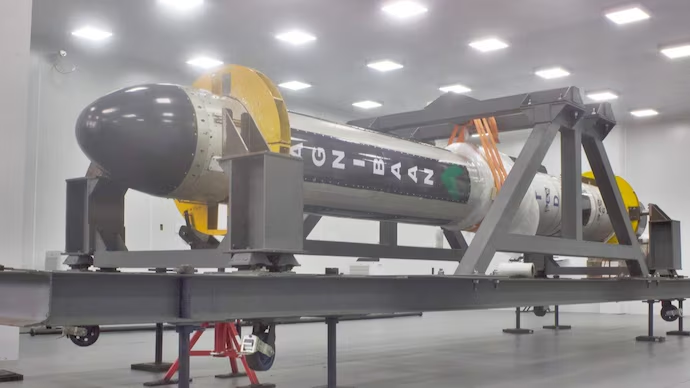Agnikul Cosmos: The first 3D-Printed Rocket Engine 24
Agnikul Cosmos
The first single-piece 3D-printed rocket engine in history was used to propel Agnikul Cosmos’s first sub-orbital test spacecraft, Agnibaan SOrTeD (Sub-Orbital Technology Demonstrator), which was successfully launched on Thursday, marking a significant milestone for the Indian space firm. After four failed efforts, this historic event shows the company’s tenacity and technological prowess. At 7.15 a.m., Agnibaan SOrTeD took off from a private launchpad at Sriharikota, the nation’s only operational spaceport.
This was also India’s first launchpad. Being the second launch by a private enterprise in India, this launch represents a major accomplishment for Agnikul Cosmos as well as the private space industry in that nation.

With the goal of increasing space accessibility through creative and affordable small satellite launch solutions, Agnikul Cosmos was founded in 2017 by Srinath Ravichandran and Moin SPM. Agnibaan SOrTeD’s sleek 3D-printed engine and triumphant launch demonstrate the company’s potential to lead the way in space technology. With this mission, India’s space technology landscape has advanced significantly, and the role of private industry in supporting national space exploration objectives has been put into sharp relief.
Setting the stage for future innovations and the democratization of space travel, Agnikul Cosmos keeps pushing the boundaries.
The basics of Agnikul Cosmos, the technology underlying their 3D-printed rocket engine, and the prospects for space travel in the future are all covered in detail in this article.
What is Agnikul Cosmos?
An Indian aerospace business called Agnikul Cosmos is devoted to creating tiny satellite launchers. The company was founded in 2017 by Moin SPM and Srinath Ravichandran with the goal of increasing accessibility to space by offering dependable and reasonably priced launch systems.
What are Agnikul Cosmos’ core objectives?
Agnikul Cosmos’ main goal is to make small satellite launch procedures easier. Their goal is to offer consumers on-demand launch services so they may select the precise orbit and time slot that best suit their requirements. Applications ranging from commercial satellite operations to scientific research depend on this versatility.
Please also visit 3D Printing space craft for similar topic.
What Makes Agnikul Cosmos’ 3D-Printed Rocket Engine Special?
In the process of producing rocket engines, additive manufacturing, or 3D printing, provides a number of benefits, such as
Shorter Manufacturing Time: Complex multi-part manufacturing processes are required for traditional rocket engines. This is made easier by 3D printing, which creates the engine in one piece and drastically cuts down on assembly time.
Cost Efficiency: 3D printing lowers the overall cost of engine manufacture by decreasing material waste and labor expenditures.
Increased Design Flexibility: Using 3D printing, complex designs that are hard or impossible to accomplish using conventional production techniques can be realized.
What advances the 3D-printed rocket engine developed by Agnikul Cosmos?
The rocket engine built by Agnikul Cosmos is noteworthy for being the first engine to be entirely 3D printed, meaning that additive manufacturing was used to create each component. This invention lowers the number of components, doing away with the requirement for intricate installation and enhancing engine dependability.
What is the rocket engine’s 3D-printed design?
Components, including combustion chambers, cooling channels, and injectors, are all integrated into the Agnilet engine, which is built as a single piece. In addition to lowering the possibility of failure, this design guarantees structural integrity.
What are the technical specifications of the engine?
Agnikul’s small satellite launch vehicle, Agnibaan, is intended to use Agnilet. It can be enlarged for more extensive uses and has a 6 kN (kilonewton) thrust capacity. Kerosene and liquid oxygen (LOX), which are frequently used in contemporary rocket engines because of their effectiveness and performance, power the engine.
What effect does this innovation have on the space sector?
The 3D-printed rocket engine developed by Agnikul Cosmos is a major advancement for the space industry. This technology can lower the entrance barrier for space launches and increase space accessibility for a range of applications by cutting production costs and time. It makes it possible for satellite launches to occur more frequently and at a lower cost, which advances earth observation, scientific research, and international communications.
What are Agnikul Cosmos’ future plans?
Agnikul Cosmos intends to use the Agnibaan rocket for its upcoming first commercial launch. In addition, they want to keep innovating in the design and manufacture of rockets while also increasing their production capacity.
Conclusion
With the creation of the first 3D-printed rocket engine, Agnikul Cosmos has raised the bar for the aerospace sector. This technical advancement contributes to the effectiveness and dependability of rocket engines and is a major step toward more accessible and reasonably priced space travel.
The future of aeronautical engineering appears bright, with countless opportunities for exploration and discovery, as Agnikul Cosmos keeps pushing the limits of space technology.
What was the origin of Agnikul Cosmos?
Agnikul Cosmos, a space sector start-up based in the IIT Madras Research Park, was inspired by the concept to employ 3D printing technology to construct engines and rockets in 2017.
What is the mission of Agnikul?
After four failed attempts, Agnikul successfully completed its first test flight of the Agnibaan SOrTeD (suborbital technology demonstrator) on May 30, lasting 66 seconds. Following Agnibaan SOrTeD’s successful test flight, Chennai-based space firm Agnikul Cosmos plans to begin satellite launches early in 2019.
What is the name of the rocket in Agnikul Cosmos?
Agnikul Cosmos, a space firm, launched a rocket named Agnibaan. The private sector enterprise has launched a rocket into space for the second time in India. The Agnikul claim that Agnibaan was their first rocket. They solely utilized gas and liquid fuel in their Indian rocket engines.




